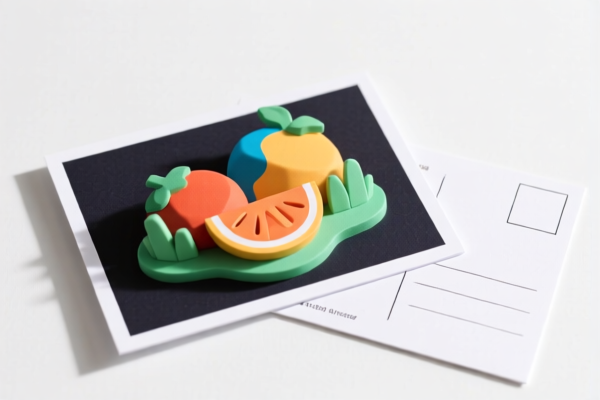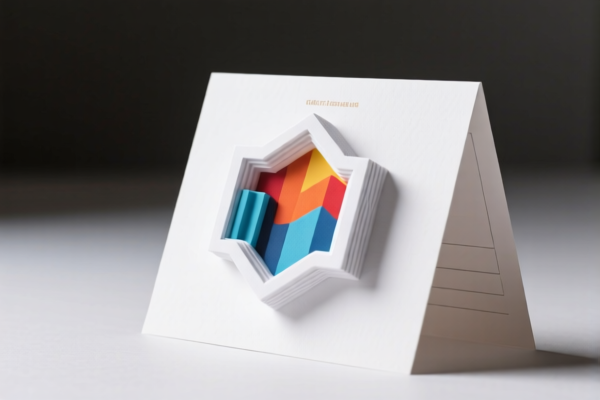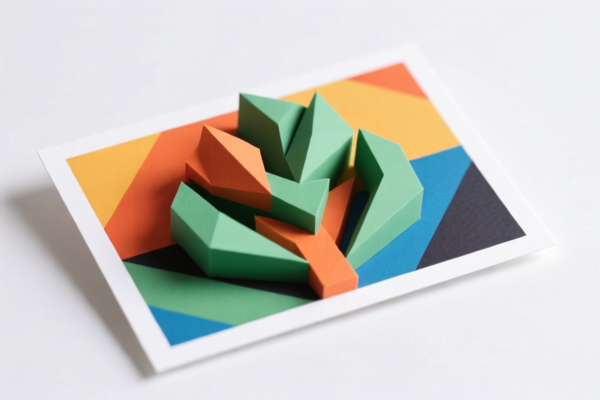| HS Code | Official Doc | Tariff Rate | Origin | Destination | Effective Date |
|---|---|---|---|---|---|
| 8523494000 | Doc | 55.0% | CN | US | 2025-05-12 |
| 8523802000 | Doc | 37.5% | CN | US | 2025-05-12 |
| 9023000000 | Doc | 37.5% | CN | US | 2025-05-12 |
| 4911100080 | Doc | 37.5% | CN | US | 2025-05-12 |
| 4911998000 | Doc | 37.5% | CN | US | 2025-05-12 |
| 4909002000 | Doc | 37.5% | CN | US | 2025-05-12 |
| 4909004000 | Doc | 30.0% | CN | US | 2025-05-12 |
| 3926909400 | Doc | 55.0% | CN | US | 2025-05-12 |
| 3926904800 | Doc | 33.4% | CN | US | 2025-05-12 |
| 3919905060 | Doc | 60.8% | CN | US | 2025-05-12 |
| 3919901000 | Doc | 61.5% | CN | US | 2025-05-12 |




3D Card
A 3D card, also known as a pop-up card or a kirigami card, is a greeting card with a three-dimensional element that emerges when the card is opened. These cards utilize paper engineering techniques to create a sculptural design within a two-dimensional surface.
Materials
- Paper Stock: Typically made from cardstock, ranging in weight from 65lb to 110lb depending on the complexity of the design and desired durability. Heavier weights are used for more intricate designs.
- Specialty Papers: Often incorporate decorative papers like metallic, textured, or patterned cardstock.
- Adhesives: Glue, double-sided tape, and glue dots are used for assembling the various components. Acid-free adhesives are preferred for archival quality.
- Optional Embellishments: May include ribbons, glitter, beads, or other decorative elements.
Purpose
Primarily used as greeting cards for various occasions, including:
- Birthdays
- Holidays (Christmas, Valentine's Day, Easter, etc.)
- Weddings
- Anniversaries
- Thank You notes
- Sympathy cards
- General expressions of sentiment
Function
The primary function is to provide a visually engaging and memorable greeting. The pop-up mechanism creates a surprise element, enhancing the emotional impact of the message. The cards are designed to be opened and displayed, often serving as a small keepsake.
Usage Scenarios
- Personal Gifting: Used to convey personal sentiments in a unique and thoughtful manner.
- Event Invitations: Increasingly used for wedding invitations, party announcements, and other special events.
- Collectibles: Intricate and artistically designed 3D cards are often collected as miniature art pieces.
- Decorative Items: Some cards are designed to be displayed as small sculptures even when closed.
Common Types & Mechanisms
- V-Cut Pop-Ups: The most common type, utilizing simple V-shaped cuts to create a central pop-up element.
- Platform Pop-Ups: Features a platform that elevates the design when the card is opened. Often used for more complex scenes.
- Box Pop-Ups: Creates a box-like structure that expands when opened, revealing a multi-dimensional design.
- Rotating Pop-Ups: Incorporates rotating elements to create dynamic movement.
- Layered Pop-Ups: Utilizes multiple layers of paper to create depth and dimension.
- Kirigami Pop-Ups: Employs intricate cutting and folding techniques, often without the use of glue.
- Pull Tab Pop-Ups: Features a pull tab that activates a moving element within the card.
Based on the provided information, the following HS codes may be relevant to “3D card”:
- 4911100080: Other printed matter, including printed pictures and photographs: Trade advertising material, commercial catalogs and the like Other. This code covers printed matter, which could include 3D cards used for advertising or commercial purposes.
- 4911998000: Other printed matter, including printed pictures and photographs: Other: Other: Other: Other. This is a broader category for other printed matter, potentially encompassing 3D cards not specifically classified elsewhere.
- 3926909400: Other articles of plastics and articles of other materials of headings 3901 to 3914: Other: Cards, not punched, suitable for use as, or in making, jacquard cards; Jacquard cards and jacquard heads for power-driven weaving machines, and parts thereof; and Transparent sheeting of plastics containing 30 percent or more by weight of lead. If the 3D card is made of plastic and not punched, this code may apply.
- 3926904800: Other articles of plastics and articles of other materials of headings 3901 to 3914: Other: Photo albums. If the 3D card is designed like a photo album, this code may be relevant.
Explanation of HS Code Structure (based on provided information):
The HS code system categorizes products using a hierarchical structure. Here's a breakdown based on the codes above:
- Chapter (First two digits): Indicates the broad category of the product. For example, Chapter 49 covers "Printed matter, including printed pictures and photographs" and Chapter 39 covers "Plastics and articles thereof".
- Heading (Next two digits): Further specifies the product within the chapter. For example, Heading 4911 covers "Other printed matter, including printed pictures and photographs" and Heading 3926 covers "Other articles of plastics and articles of other materials of headings 3901 to 3914".
- Subheading (Next four digits): Provides a more detailed description of the product. For example, 49111000 covers "Trade advertising material, commercial catalogs and the like" and 39269094 covers "Cards, not punched, suitable for use as, or in making, jacquard cards".
Important Note:
The applicable tax rate for each HS code is as follows:
- 4911100080: Total tax rate: 37.5% (Basic tariff: 0.0%, Additional tariff: 7.5%, Additional tariff after 2025.4.2: 30.0%)
- 4911998000: Total tax rate: 37.5% (Basic tariff: 0.0%, Additional tariff: 7.5%, Additional tariff after 2025.4.2: 30.0%)
- 3926909400: Total tax rate: 55.0% (Basic tariff: 0.0%, Additional tariff: 25.0%, Additional tariff after 2025.4.2: 30.0%)
- 3926904800: Total tax rate: 33.4% (Basic tariff: 3.4%, Additional tariff: 0.0%, Additional tariff after 2025.4.2: 30.0%)
Please verify the material composition of the 3D card to determine the most accurate HS code. If the card contains plastics, it is important to note the need to verify the material and may require certification.
Customer Reviews
Perfect guide for anyone looking to export plastic doors. The HS code and tariff info were both accurate and easy to follow.
The details on the 5% tariff were clear, and the HS code explanation was spot-on for my needs.
This page made it easy to understand the tariff rates for exporting plastic doors. Highly recommended.
The HS code info was straightforward, but I wish there were more examples of similar products.
Great resource for understanding the trade regulations for plastic builder’s doors. Saved me hours of research.